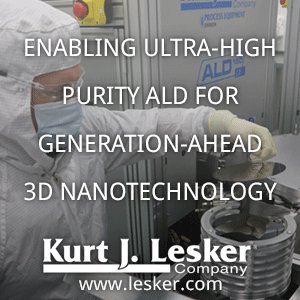Israeli-based 2D Generation (2DG), a pioneer in graphene-based solutions for semiconductors, has been acquired by ASX-listed Adisyn (ASX:AI1), an Australian defense tech services provider now expanding into the semiconductor industry. Adisyn, a founder of the Connecting Chips European Union Joint Undertaking alongside NVIDIA, Valeo, and Applied Materials, gains access to 2DG’s patented low-temperature graphene production technology. Unlike traditional methods requiring temperatures of around 1,000°C—unsuitable for delicate semiconductor chips—2DG’s process uses Atomic Layer Deposition (ALD) to grow graphene below 300°C, ensuring compatibility with chip manufacturing. This breakthrough addresses a critical industry challenge: as transistors shrink, heat generation in interconnects limits performance and reliability. Graphene’s superior conductivity and heat resistance make it a transformative material for interconnects, potentially unlocking faster, more efficient chips. 2DG’s CEO Arye Kohavi emphasizes the technology's importance for overcoming bottlenecks in chip design, with discussions already underway with industry giants like TSMC and Nvidia. As 2DG scales its ALD capabilities, it aims to integrate graphene into next-generation chips, potentially revolutionizing applications from EVs to AI systems and positioning the company as a key player in the semiconductor sector.
Adisyn Ltd (ASX: AI1) has announced the acquisition of a state-of-the-art Atomic Layer Deposition (ALD) machine from Beneq, a leader in deposition technology, to advance its subsidiary 2D Generation Ltd’s innovative semiconductor solutions. The ALD system will enable precise, ultra-thin graphene layering on semiconductor interconnects, addressing critical bottlenecks in chip manufacturing and paving the way for transformative advancements in high-performance computing, including generative AI, data centers, and defense applications. Scheduled for installation within the next 5-6 months, this equipment represents a crucial step in scaling production of graphene-coated interconnects to enhance speed, energy efficiency, and scalability in semiconductor technology.
Recently, 2D Generation has also partnered with M&T Semiconductor, a leading specialty semiconductor advisory firm founded by industry veterans Dr. Itzhak Edrei and Zmira Shterenfeld Lavie, to accelerate the development and commercialization of its groundbreaking graphene technology. This collaboration aims to secure strategic partnerships with semiconductor fabricators, fabless chipmakers, and equipment vendors while prioritizing licensing opportunities and potential buyouts. M&T brings decades of expertise from Tower Semiconductor, leveraging deep industry connections to advance 2DG’s patented sub-300°C graphene coating process, which addresses critical challenges in interconnect performance and scalability. With this partnership, 2DG is positioned to reshape semiconductor manufacturing and drive next-generation chip innovation.
M&T Semiconductor, founded in 2019, is a specialized advisory firm offering strategic consulting, mergers and acquisitions (M&A) services, and research and development (R&D) expertise in the semiconductor industry. Led by industry veterans Dr. Itzhak Edrei, former President of Tower Semiconductor, and Zmira Shterenfeld Lavie, former General Manager at Tower Semiconductor, M&T leverages over three decades of experience to assist clients in refining objectives, scouting technologies, and implementing processes.Their services encompass strategic consulting, M&A facilitation, technology scouting, and implementation, aiming to deliver tangible outcomes and foster partnerships within the semiconductor sector.
Sources:
2DG secures semiconductor advisor to develop initiatives - Adisyn Ltd (ASX:AI1) - Listcorp.
2DG a part of Adisyn to build new graphene for chip mfg



%20(1).png)




















